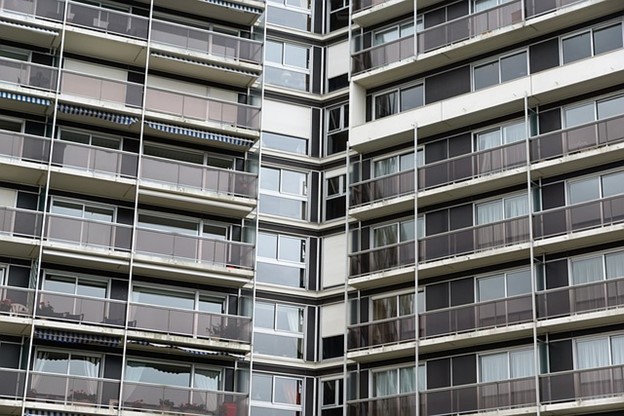When it comes to architectural heritage, we can all agree that Florida has a rich history. And it is reflected well in its diverse architecture, be it Spanish colonial structures or Art Deco gems.
In fact, if you’re lucky enough to own or manage an old building in the Sunshine State, you’ve got a piece of history on your hands.
But owning a piece of architectural marvel also comes with great responsibility, starting with routine maintenance.
You see, maintaining an old building in Florida’s climatic conditions presents some challenges for sure. However, with the right approach, you can preserve your property’s charm and structural integrity for years to come.
It can start with something as simple as a balcony inspection in Florida and go on to include advanced assessments and upkeep plans.
In this article, we’ve discussed it all, so let’s dive in and see how you can keep your old Florida building in tip-top shape.
Why does maintenance matter in the first place?
Let’s start with the most basic question, i.e., why is maintenance so crucial for old buildings? Well, as the saying goes, prevention is better than cure.
So, with regular upkeep you catch small issues before they turn into big and expensive problems.
After all, a little preventive maintenance and care goes a long way in preserving your building’s historical value and charm. Not to mention, this will also ensure your property passes a 40 year recertification inspection in Florida.
Furthermore, regular maintenance is way more cost-effective and eco-friendly than major renovations.
Florida’s climate makes old building maintenance critical
Maintaining an old building in Florida has its own challenges, not the least of which are the state’s hot and humid climate, frequent rainstorms, and occasional hurricanes. And this can really wreak havoc on your building.
For starters, moisture is your biggest enemy as it can lead to mold, rot, and structural damage. Nevertheless, with the right maintenance plan, you can tackle these challenges head-on.
How to go about maintaining your old Florida building?
While the overall maintenance process can be quite complex, especially in the wake of your building’s old age, you can divide it into small steps.
All in all, here are the steps that you need to follow for a seamless maintenance regimen:
Step 1. Begin with routine inspections
Good maintenance relies on regular and thorough inspections at least twice a year, preferably in spring and fall.
Here’s what these inspections will look out for:
- Roof: Check for missing or damaged tiles/shingles, signs of leaks, or sagging.
- Exterior walls: Look for cracks, peeling paint, or signs of moisture damage.
- Windows and doors: Ensure they’re properly sealed and functioning smoothly.
- Gutters and downspouts: Clear out any debris and check for proper drainage.
- Foundation: Keep an eye out for cracks or signs of settling.
- Interior: Check for damp spots, cracks, or any musty odors that might indicate moisture issues.
Step 2. Get rid of moisture
Moisture control is key to any maintenance plan, more so in Florida’s humid climate. And to that end, you should ensure that your building has proper ventilation, especially in attics and crawl spaces.
Also, you should consider installing dehumidifiers in problem areas and keep air conditioning systems well-maintained to help control indoor humidity levels.
On the outside, it is essential to ensure that water is directed away from your building’s foundation.
Further, the gutters should be cleaned regularly and downspouts extended far enough from the building.
Step 3. Paint your building
A good paint job is more than just aesthetic in Florida’s often harsh sunshine. In fact, painting acts as a vital layer of protection for your building’s exterior.
We suggest you use high-quality weather-resistant paints appropriate for your building’s materials.
Step 4. Care for the building materials
Old buildings often feature materials that require specific care. For instance, if your building has wooden elements, regular inspection and treatment for termites and other wood-destroying organisms is crucial.
At the same time, if you’ve got brick or stone structures, you can keep an eye out for mortar deterioration and address it.
Also, old Florida buildings feature unique architectural elements like decorative ironwork or intricate plastering. These details often require specialized care, so do consult with preservation experts for guidance.
Step 5. Keep your building hurricane ready
Living in Florida calls for being ready for hurricane season. And this preparedness is especially important for old buildings.
Here’s what you can do to be hurricane ready:
- Ensure your roof is in good condition
- Install hurricane shutters or impact-resistant windows
- Secure any loose exterior elements before a storm hits.
Step 6. Call in the experts
While there’s a lot you can do yourself, some maintenance tasks require professional expertise.
For instance, the specialized knowledge of historical construction techniques might be necessary for old structures.
So, do call in experts for tasks like:
- Structural repairs
- Major roofing work
- Electrical or plumbing updates
- Restoration of historical features
To sum up
While maintaining your old building is an ongoing process, it is also quite rewarding.
Picture this: Each time you address a maintenance issue, you’re not just fixing a problem, you’re preserving a piece of history.
And with regular care and attention, your Florida building can continue to charm for many more centuries.

Recent Comments